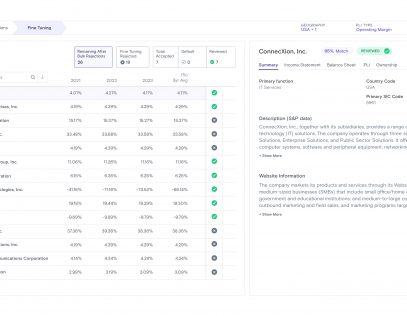Specific guidance and/or local regulations on transfer pricing of financial transactions has often been limited at best. For example, until recently, the OECD’s Transfer Pricing Guidelines for Multinational Enterprises and Tax Administrations did not contain specific guidance on financial instruments such as intercompany loans. Also, many tax administrations focused more on limiting (excess) interest deductions through creating corporate tax ratios (e.g. thin capitalization rules, EBIT(A) ratios) that limited deductibility of (excess) interest, and/or applying anti-abuse doctrines. As a result, the transfer pricing documentation of most multinational enterprises does not contain much analysis and documentation on the arm’s length nature of intercompany loans other than an analysis calculating an arm’s length interest range based on the terms of the loan.
More recently, however, tax authorities have started to focus on a more structured approach in analyzing inter-company financial transactions including loans. The OECD Base Erosion and Profit Shifting (“BEPS”) project, issued in 2015, included various recommendations to limit (excessive) interest deductions and tackle aggressive tax planning or abuse situations. BEPS Action Plan 4 recommended limiting tax deductions for interest paid on inter-company loans; BEPS Action Plan 2 aimed at tackling hybrid mismatches including double non-taxation on inter-company loans; and BEPS Action Plan 8 dealt with the importance of economic substance.
Many countries implemented these recommendations in their respective regulations and following the OECD BEPS Action Plan package, the European Union initiated the Anti-Tax Avoidance Package in 2016, which included the Anti-Tax Avoidance Directive (“ATAD 1”). ATAD 1 included, for example, interest limitation rules in relation to artificial debt structures designed to minimize tax and related to excessive borrowing costs. Overall, the rules included in ATAD 1 are aligned with the BEPS Action Plan 4 recommendations.
Besides the BEPS project, the OECD also (finally) issued draft guidance on financial transactions. This became the new Chapter X in the revised OECD Transfer Pricing Guidelines for Multinational Enterprises and Tax Administrations issued in 2022. In Chapter X, the OECD for the first time provided guidance on how to deal with financial transactions, including inter-company loans, from a transfer pricing perspective.
Chapter X covers a wide range of intergroup financial transactions. In relation to intercompany loans one of the key topics is the so-called “accurate delineation of the transaction.” Whereas in the past MNEs, as well as many tax authorities, focused mainly on whether the interest rate of the inter-company loan was at arm’s length, Chapter X discusses, with reference to the Commentary to article 9 of the OECD Model Tax Convention, whether granting the loan itself is at arm’s length. In other words, whether at the time of concluding the loan agreement, the transaction should be treated as a loan or whether it should be regarded as some other kind of payment (e.g. capital contribution). Chapter X recommends that an accurate delineation analysis of the loan should be undertaken looking at the position of both the lender and the borrower. It specifically references the use of debt service analysis and looking at differences that exist among different industries, but also from a lender perspective whether the lender has control over the risks and has the financial capacity to assume such risks and from a borrower perspective the availability to repay the principal amount and the interest.
One other interesting topic discussed in Chapter X is the concept of “option realistically available” (“ORA”). In general, this concept requires taxpayers to conclude transactions following a process of reviewing the terms of the transaction and compare this with other options realistically available and conclude the transaction in a way that is most beneficial to the taxpayer. This is relevant both from the lender and borrower perspective.
The addition of Chapter X to the updated OECD Transfer Pricing Guidelines for Multinational Enterprises and Tax Administrations is still very recent, but some countries have already updated their local regulations based on the new guidance. The Netherlands, for example, issued a revised version of the Dutch Transfer Pricing Regulations in 2022, which now also includes a specific section on financial transactions and a reference to Chapter X of the OECD Transfer Pricing Guidelines for Multinational Enterprises and Tax Administrations. Ireland introduced accurate delineation of financial transactions including a debt capacity analysis into its local transfer pricing guidelines. Earlier this year, South Africa also updated its TP regulations as well.
It is expected that more countries will update their local transfer pricing regulations based on the recommendations included in Chapter X of updated OECD Transfer Pricing Guidelines for Multinational Enterprises and Tax Administrations, or they will review the intercompany financial transactions of taxpayers with a reference to Chapter X of the updated OECD Transfer Pricing Guidelines for Multinational Enterprises and Tax Administrations. Either way, it is likely that more and more tax administrations will expect to see more detailed documentation and analysis surrounding intercompany financial transactions, and they will critically review the documentation presented to them by taxpayers.









